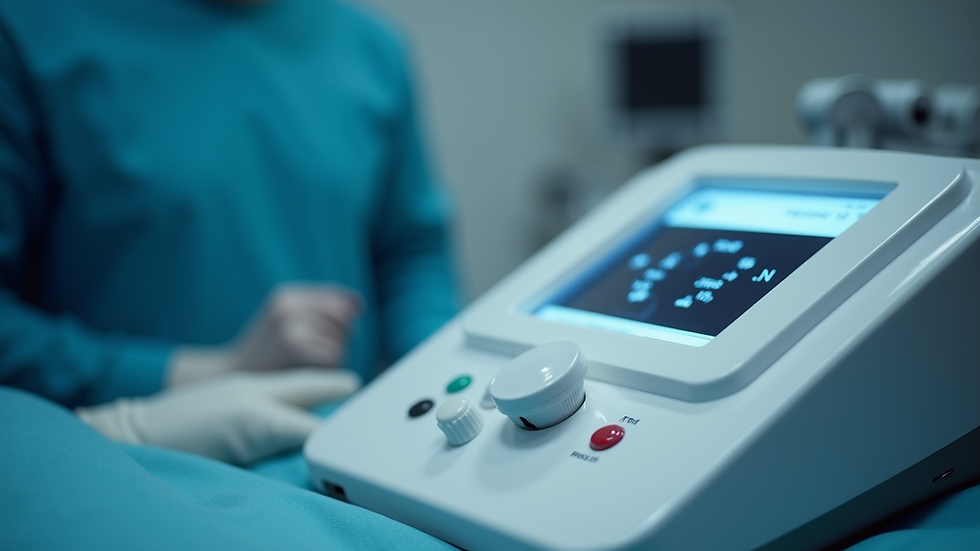Could Your Penis Be Broken? YES ! Penile Fracture
- Fabio Castiglione

- Dec 23, 2024
- 3 min read
.

i=EwsfQQwqL3JQ5yzOMost individuals who hear the term "broken penis" could picture a cracked bone.
Though the penis lacks bones, a "penile fracture" is a real and somewhat dangerous medical ailment. The delicate tissue of an erect penis suffers this damage when it suddenly and forcefully bends, tearing its internal structure. Though rare, penile fractures can cause long-term problems if not treated right away and are uncomfortable. Penile fractures are seen here in great depth together with their symptoms, available treatments, recovery process, and preventative actions.
Knowing Penile Anatomy
The penis is prone to some forms of damage since it consists of specialised components allowing for erections. Two main elements are involved:
Two cylindrical chambers called corpora cavernosa fill with blood during an erection, therefore stiffening the penis.
Tough, fibrous covering called tunica albuginea encircles the corpora cavernosa to give structural support.
The tunica albuginea strains and thins in a straight penis, hence it is vulnerable to tearing under rapid pressure or force. An erection's stiff condition increases the chance of damage unlike flaccid tissue.
Penile Fracture: Their Causes
Usually involving abrupt, powerful motions, penile fractures usually result from activities involving the penis being erect. Typical causes include:
Penile fractures most often result from intensive sexual activity. Should the penis slide out and crash on a hard surface, say the partner's pubic bone or perineum, the ensuing bend may tear the tunica albuginea.
Aggressive handling of the penis during masturbation might cause comparable damage.
Physical Trauma: A fracture can also follow from falling on an erect penis or from inadvertent bending.
Men in some societies deliberately bend their erect penis to make it flaccid, a habit that greatly raises their chance of a fracture.
Indices and Illnesses
Usually accompanying a penile fracture are clear and concerning symptoms including:
Audible "Crack" or "Pop": An unexpected sound suggesting a tear in the tunica albuginea.
Strong pain—immediate, sharp—that could feel stabbing or deep.
Fast swelling, usually accompanied by black-and-blue discolouration from internal blood, causes bruising.
Deformity: Particularly in cases with unequal swelling, the penis could seem twisted or malformed.
Loss of Erection: Usually right after the damage the penis becomes flaccid.
Blood in the pee or trouble urinating could point to urethral damage—that which goes through the penis.
Diagnosis and Treatment Guide
A penile fracture presents a medical emergency.
Preventing long-term consequences include penile curvature or erectile dysfunction depends on quick diagnosis and treatment.
Based on outward symptoms and the patient's account of the incident, doctors can usually spot a penile fracture.
Methods of Imaging:
Sometimes the diagnosis is confirmed by magnetic resonance imaging (MRI) or ultrasonic waves, particularly if urethral injury is suspected.
Treatment:
Penile fractures are treated mostly by surgical surgery.
Surgeons find the tear in the tunica albuginea during the operation and sutures seal it.
Here is the reason surgery is the recommended method:
Studies reveal that, with timely surgical correction, up to 90% of men restore normal erectile function.
Surgery lowers the long-term risks including painful erections, chronic curvature, and erectile dysfunction.
Past non-surgical treatments such anti-inflammatory drugs and compression bandages were deemed less effective and risky today.
Outlook and Recovering
After penile fracture surgery, one spends a comparatively brief hospital stay and recovers at home. One should expect:
Most patients swell and feel uncomfortable for a few weeks following surgery. Anti-inflammatory medicines and painkillers can help control discomfort.
Doctors usually advise against sexual activity and intense physical exercise for four to six weeks in order to permit full recovery.
Long-Term Results:
Treatments taken right away improve the prognosis greatly. Most guys avoid major issues and restore complete sexual function.
Stopping Penile Fragments
Although penile fractures are rare, there are ways you might reduce your risk:
Open conversation with your partner about comfort levels and limits will help to prevent mishaps during sexual activity.
Steer clear of too forceful motions or high-risk sexual positions that cause the penis to be in odd angles.
Steer clear of dangerous habits:
During an erection, resist bending or pushing the penis.
Control with Care:
Treat the penis carefully to prevent needless stress whether during masturbation or other activities.
Essential Learnings
Though the concept of a "broken penis" sounds fanciful, penile fractures are a genuine and dangerous disorder that calls for quick medical intervention. An audible "pop," severe pain, swelling, and deformity all point to the need of seeing a doctor very away. With most patients recovering normal function when treated quickly, surgical repair provides the best opportunity for complete recovery. Starting with awareness and careful behaviour during physical and sexual activities, prevention is.
Knowing the risks and symptoms of penile fractures can help you protect your personal health and keep hope for a recovery even should an incident arise.
Let me know if you need further edits or formatting!
Are you interested in having your case evaluated by Dr Castiglione? Call +447830398165 and fix your reserved appointment!







Comments